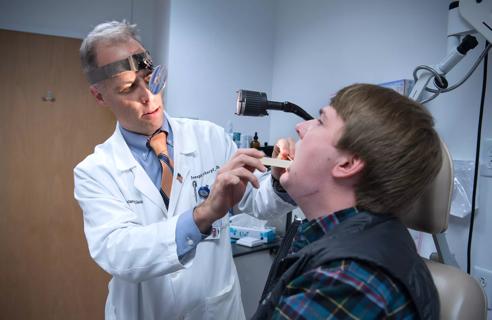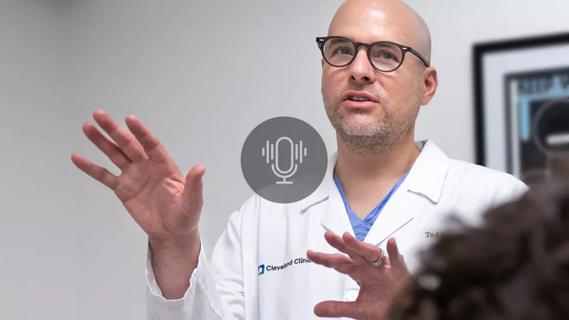Prompt referral of difficult cases can ensure removal of objects without complications

Early consultation is best in cases of pediatric foreign body presentations in young children with non-graspable objects in their ear canals, according to research presented by Katie M. Mingo, MD, a resident in the Department of Otolaryngology, Head and Neck Institute at Cleveland Clinic. She presented at the American Society of Pediatric Otolaryngology Annual Meeting (a section of the Combined Otolaryngology Spring Meetings (COSM)) held in Maryland in April.
Advertisement
Cleveland Clinic is a non-profit academic medical center. Advertising on our site helps support our mission. We do not endorse non-Cleveland Clinic products or services. Policy
“Pediatric ear foreign body presentation is common, and most cases present to the Emergency Department (ED) or primary care practices for removal of the object first,” explains Dr. Mingo. “Although many of these patients are treated without difficulty, there is a possibility for major complications, so I wanted to compare the success rates in primary care and ED settings to those in otolaryngology.” She also analyzed the characteristics of patients or ear foreign bodies that should prompt early referral to an Ear, Nose and Throat (ENT) specialist.
Dr. Mingo performed a retrospective chart review looking for ICD codes to identify pediatric patients who presented to Cleveland Clinic in the year 2016 for ear foreign body removal. She found 275 patients, 133 (48.4 percent) who presented to the ED, 60 (21.8 percent) who presented to a pediatrician, 44 (16 percent) who presented to an ENT and 38 (13.8 percent) who presented to an ENT after previous attempts by other physicians at foreign body removal.
The overall rate of successful removal was high in the study, with 75 percent of pediatricians removing the objects on a first attempt compared to 88 percent of ED physicians and 100 percent of ENTs. Minor complications such as scratches of the ear canal wall were more common with retrieval by an ENT after prior failed attempts by other clinicians, occurring in 26.3 percent of cases versus 2.3 to 6.0 percent. ENTs observed two cases of tympanic membrane perforations after previous failed attempts by other physicians; both of these cases occurred in patients who presented with non-graspable foreign bodies in their ears. (Another possible major complication of ear foreign body removal is ossicular damage, which could lead to permanent hearing loss, she says.)
Advertisement
Dr. Mingo also found that the rate of operative intervention was higher in patients who presented to an ENT after another physician’s failed attempt at removal versus patients who presented to an ENT first (34.2 percent versus 4.6 percent). “There were seven patients who presented to an ENT after previous attempts at removal that were both age five or younger and had non-graspable foreign bodies in their ears,” she reports, “six (85.7 percent) of which required operative intervention for successful removal.”
Although many patients were successfully treated by pediatricians and in the ED, early consultation with an ENT should be considered in certain cases, according to Dr. Mingo. The factors that characterize success versus failure are when clinicians are dealing with:
“If two or more of these factors are present, ED and primary care physicians should consider referral to an ENT before trying to remove the object themselves because of the high rate of potential failure, complications and need for operative interventions,” she reports. “If you fail to remove the object once with kids, they often will not cooperate because they know the intervention can be uncomfortable. The ear canal is a very sensitive area that can easily become inflamed by a foreign body and by attempts by the child or parent to remove it before coming to see a clinician.”
Advertisement
Advertisement

A deep dive into the evolution of surgical sleep therapy

A commitment to sharing expertise has fostered a global exchange of ideas

How a new clinic is helping to streamline evaluations for patients

A multidisciplinary approach and individualized plan of care are imperative

Insight on larynx disorders and treatments

Novel procedures provide options for patients who can’t tolerate CPAP

Research on children with UHL explores the quality-of-life benefits and outcomes of cochlear implants

A look at how custom-fitted oral appliances work and when they’re a good fit for patients